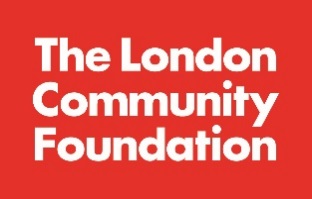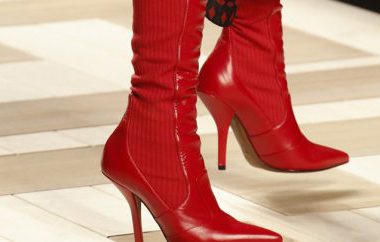
“Food is the most important material in the world.” Marije Vogelzang
The V&A has today unveiled FOOD: Bigger than the Plate, a major new exhibition exploring how innovative individuals, communities and organisations are radically re-inventing how we grow, distribute and experience food. Taking visitors on a sensory journey through the food cycle, from compost to table, it poses questions about how the collective choices we make can lead to a more sustainable, just and delicious food future in unexpected and playful ways.
To celebrate the opening, the V&A has revealed that 200 limited-edition edible tickets will be available to the first exhibition visitors on 18May. The branded tickets are made from icing sugar and provide an edible beginning to this interactive exhibition.
Also announced today, the final exhibit in the show is LOCI Food Lab by Center for Genomic Gastronomy. This travelling food cart provides each visitor with a unique bioregional canapé based on their answers to a quiz on what food future they would like to see, with the menu developed in consultation with exhibition sponsor BaxterStorey.
The exhibitionfalls at a pivotal time where food and our relationship to it are topics of increasing global interest and debate. Over 70 contemporary projects, new commissions and creative collaborations by artists and designers working with chefs, farmers, scientists and local communities, are centered around four sections: ‘Compost’, ‘Farming’, ‘Trading’ and ‘Eating’.
‘Compost’ examines diverse projects that aim to create a more resilient food system by closing the nutrient loop and changing our perception of waste. Daily Dump’s pioneering system for home composting in India uses beautiful handcrafted terracotta pots to challenge the stigma of handling waste, whilst designer Fernando Laposse works with the discarded husks of colourful heirloom corn varieties in Mexico to create a new marquetry material, Totomoxtle, that supports agricultural biodiversity. GroCycle’s Urban Mushroom Farm installation in the gallery illustrates a circular economy by using waste coffee grounds, including grounds from the V&A Benugo café, to grow edible Oyster mushrooms. Once fully grown, these will be harvested in front of visitors and served in selected museum café dishes.
Exploring bold ideas to reinvent our relationships with the landscapes, organisms and people that yield our food, ‘Farming’ explores innovative urban, open-source and social farming projects, as well as new technologies that might change how we grow and farm. These include a pedal-powered Bicitractor developed by Farming Soul to support small-scale farming, and a working version of MIT’s Food Computer, an open source controlled-environment platform that precisely replicates natural conditions to grow crops in unexpected places. The section also features a major new commission by artists Fallen Fruit. This bespoke 12-metre squared wallpaper draws on the horticultural history of the V&A – which was once an important nursery for fruit trees – and its collection to explore the past and contemporary role of fruit in creating shared culture.
‘Trading’ poses questions about more transparent and diverse ways of buying, selling and transporting food. Early food adverts will shine a light on trading history, whilst contemporary exhibits will bring together projects that make supply chains more visible such as Banana Story by Björn Steinar Blumenstein and Johanna Seelemann. Company Drinks, a community enterprise in east London that brings people together to pick, process and produce drinks, have a bar stationed in the gallery serving drinks samples to visitors.
The pleasure of cooking and eating, and how a meal connects us culturally, socially and politically, are explored through projects by Ferran Adrià, Michael Rakowitz, Lubaina Himid and Grizedale Arts among others. ‘Eating’ explores the role of the table, the challenges we face in feeding the world, and the power of deliciousness, as well as a look at scientific experiments, ingredients and recipes pushing the boundaries of cooking. Examples include Carolien Niebling’s The Sausage of the Future, and Christina Agapakis and Sissel Tolaas’ Selfmade project, culturing cheese from human bacteria. Remade for the V&A by an interdisciplinary team at Open Cell, it aims to challenge cultural squeamishness about bacteria and draws on recent scientific studies of the microbiome and its importance to the human body. Unique ‘microbial portraits’ of musician and cheesemaker Alex James (Blur), chef Heston Blumenthal, British rapper Professor Green, baker and food writer Ruby Tandoh, and Madness frontman Suggs are on display, recreated as Cheshire cheese, comté cheese, mozzarella, stilton and cheddar respectively.
This timely exhibition draws on the V&A’s close links with food, including over thirty historic objects from the V&A collections – influential early food adverts, illustrations and ceramics – providing further context to the exhibition. Built on the site of Brompton Nursery, the V&A housed an early food museum and over 150 years ago opened the world’s first purpose-built museum refreshment rooms. The V&A café, catered by Benugo, remains central to the museum, linking food culture and the visual arts.
Catherine Flood and May Rosenthal Sloan, co-curators of FOOD: Bigger than the Plate at the V&A, said: “Food is one of the most powerful tools through which we shape the world we live in, from how we create society, culture and pleasure to how we determine our relationship with the natural world. In an era of major ecological challenges, fast-changing societies and technological re-invention, now is a crucial moment to ask not just what will we be eating tomorrow, but what kind of food future do we want? What could it look like? And taste like? Today, a wide range of inspiring creative practitioners are addressing these expansive questions. Putting food at the heart of the museum, this exhibition is an exciting opportunity to bring together some of the best of this work to explore food as rich ground for citizenship, subversion and celebration.”
Running from 28-30 June, the V&A will also be involved in the Great Exhibition Road Festival, running the Museum of Food zone. This three-day festival will feature workshops, talks, behind-the-scenes tours and performances with hundreds of events over the weekend, and is organised by more than 20 museums, and other organisations based in South Kensington. The festival marks the bicentenary of the births of Queen Victoria and Prince Albert and takes inspiration from the Great Exhibition of 1851. The Museum of Food zone will feature a Food-themed Friday Late on 28 June as well as demonstrations, displays, food stalls and experimental edible experiences across the weekend.






